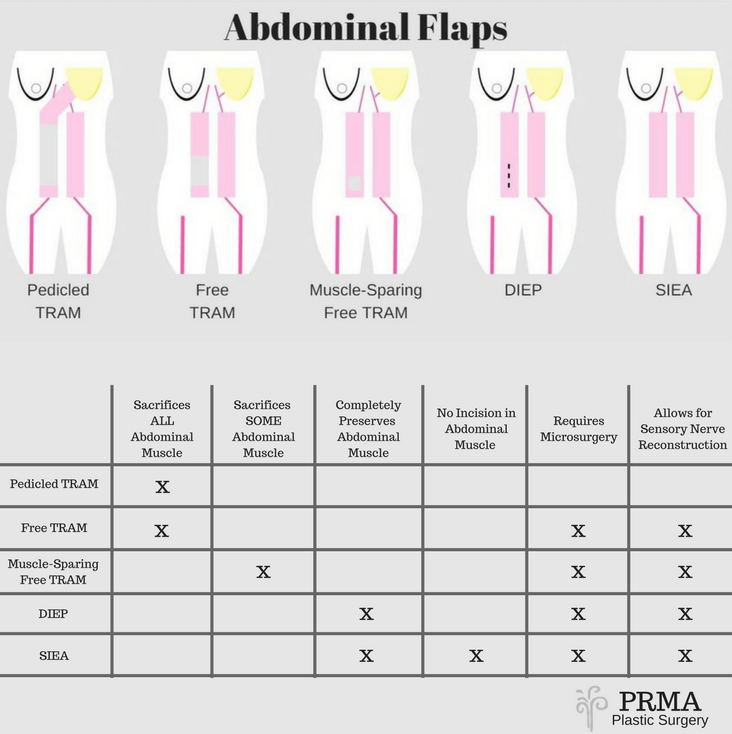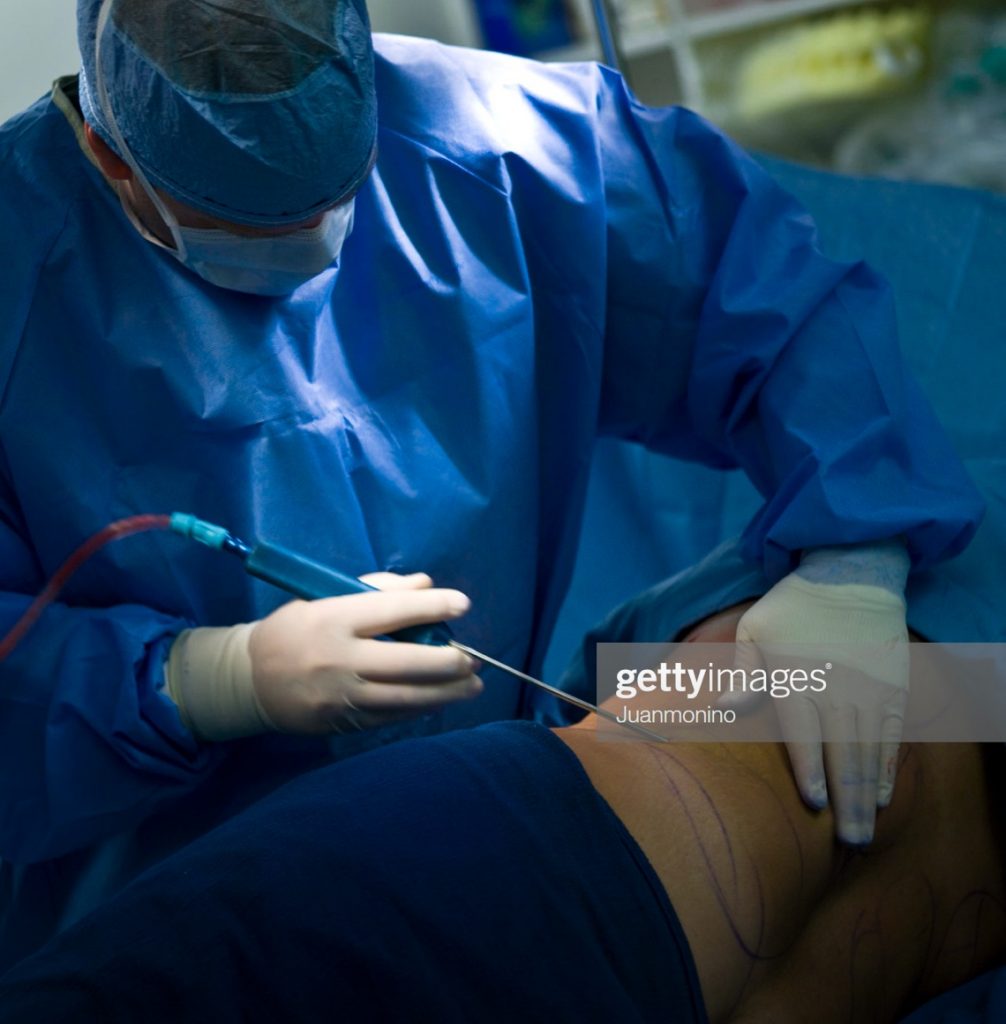TRAM Flap
The TRAM flap was replaced by the DIEP flap as the gold standard in breast reconstruction several years ago. However, it is important to understand the concept of TRAM surgery and how it has evolved into today’s cutting edge DIEP flap procedure.
There Are Three Main Types Of The TRAM Flap Operation Commonly Performed By Plastic Surgeons For Mastectomy Reconstruction.
The main differences between the 3 types is the amount of abdominal muscle removed and how the flap is moved to the chest. Studies have shown that the degree of loss in abdominal strength following TRAM surgery mirrors the amount of abdominal muscle removed:
Pedicled TRAM Flap
This was the first operation to describe use of one of the rectus abdominus muscles (sit-up muscle) for breast reconstruction. The surgery begins with an incision from hip to hip. Then, a “flap” of skin, fat and one of the patient’s abdominal muscles is tunneled under the skin to the chest to create a new breast. Recovery from the surgery is difficult and painful. Long-term, the patient has to adapt to the loss of some abdominal strength (up to 20%). Other possible complications include fat necrosis (part of the tissue turns hard due to poor blood supply), and abdominal complications such as bulging and/or hernia.
Free TRAM Flap
This procedure involves disconnecting the flap from the patient’s body, transplanting it to the chest, and reconnecting it to the body using microsurgery. The main advantage over the pedicled TRAM is improved blood supply and therefore less risk of fat necrosis. Since the tissue is disconnected and transplanted to the chest, there is also no tunneling under the skin as there is with the pedicled procedure and no subsequent upper abdominal bulge around the ribcage area (which is typically seen with tunneling).
Muscle-Sparing Free TRAM Flap
This operation is associated with all the benefits of the free TRAM but has significantly fewer abdominal complications and side-effects (pain, bulging, hernia, strength loss) because the vast majority of the abdominal muscle is spared and left behind. The amount of muscle taken is typically minimal (postage-stamp size). The PRMA surgeons will opt for this surgery only in the rare event that the patient’s anatomy does not allow for the DIEP or SIEA flap to be performed.


Free Consultation
Sed ut perspiciatis unde omnis iste natus error sit voluptatem accusantium doloremque laudantium, totam rem aperiam, eaque ipsa quae ab illo inventore veritatis et quasi architecto beatae vitae dicta sunt explicabo. Nemo enim ipsam voluptatem quia.
- Lorem ipsum dolor sit amet, consectetur adipiscing elit, sed
- Do eiusmod tempor incididunt ut labore et dolore magna aliqua
- Ut enim ad minim veniam, quis nostrud exercitation ullamco
- Laboris nisi ut aliquip ex ea commodo consequa do eiusmod tempor incididunt ut labore et dolore magna aliqua
Re-Sculpts The Body
Sed ut perspiciatis unde omnis iste natus error sit voluptatem accusantium doloremque laudantium, totam rem aperiam, eaque ipsa quae ab illo inventore veritatis et quasi architecto beatae vitae dicta sunt explicabo. Nemo enim ipsam voluptatem quia.
- Lorem ipsum dolor sit amet, consectetur adipiscing elit, sed
- Do eiusmod tempor incididunt ut labore et dolore magna aliqua
- Ut enim ad minim veniam, quis nostrud exercitation ullamco
- Laboris nisi ut aliquip ex ea commodo consequa do eiusmod tempor incididunt ut labore et dolore magna aliqua

PRMA Plastic Surgery Patient Stories

Oh what I would give to have found PRMA before my mastectomy, prosthesis, implants and 6 plus years of not being satisfied. I thank God every day for bringing PRMA into my life and I thank them for doing what they do so well. My wish is that PRMA reaches as many women possible early on so they too can benefit from the amazing work that they do for breast cancer patients. I promote PRMA every chance I have!
Colleen
Deer Park, WA
I would like to say is throughout the whole procedure from the first procedure, to the second procedure, to my final procedures I never felt less than a woman. I like my breast, and so the entire time I never felt like I was not a woman at any point. So definitely I would recommend PRMA to anyone and everyone.
Sarah
San Antonio, TX
I’m super excited and love the results and feel amazing. I want to let anyone listening to this know that I had the worst anxiety before my surgery thinking of everything you can imagine. I can say that this was 100% the right choice for me I love the way that I look. The process was much easier than what I expected.
Laurie
Yorba Linda, CA
I knew I wanted to have a mastectomy, but I didn’t know about breast reconstruction. Dr. Ledoux gave me ALL the options I had, and I really appreciated that!
Jackie
San Antonio, TX
Schedule Your Consultation
Get personalized breast reconstruction recommendations from our board-certified plastic surgeons.